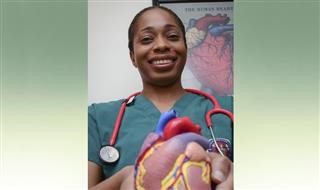The Infertility Organization
Endometriosis Infertility Options
We have your source for complete information and resources for Endometriosis Infertility Options on the Internet.
After ruling out female infertility concerns, tests for male infertility may be needed. Physical Problems A variety of physical problems can cause male infertility. These problems either interfere with the sperm production process or disrupt the pathway down which sperm travel from the testes to the tip of the penis. These problems are usually characterized by a low sperm count and/or abnormal sperm morphology. The following is a list of the most common physical problems that cause male infertility: Variocoele: A varicocele is an enlargement of the internal spermatic veins that drain blood from the testicle to the abdomen (back to the heart) and are present in 15% of the general male population and 40% of infertile men. These images show what a variocoele looks like externally and internally. A varicocele develops when the one way valves in these spermatic veins are damaged causing an abnormal back flow of blood from the abdomen into the scrotum creating a hostile environment for sperm development. Varicocoeles may cause reduced sperm count and abnormal sperm morphology which cause infertility. Variococles can usually be diagnosed by a physical examination of the scrotum which can be aided by the Doppler stethoscope and scrotal ultrasound. Varicocoele can be treated in many ways (see treatment section), but the most successful treatments involve corrective surgery. GIFT (gamete intrafallopian tube transfer) and ZIFT (zygote intrafallopian transfer). Like IVF, these procedures involve retrieving an egg, combining it with sperm in a lab, and then transferring it back to your body. These may be purchased over the counter and allow couples to predict the most fertile days in the cycle. The elevated temperature hinders the maturation process of sperm, which develop best in an environment that is slightly cooler than body temperature. 8 If a woman has irregular cycles, the testing should be conducted later in the cycle, starting seven days before presumed onset of menses, and repeated weekly until menses.
Primary Lymphoma of Kidney. (PDF, 586 KB) The Journal of Urology, 1973. The main approach to correcting or removing these uterine abnormalities is by hysteroscopy, a surgical method by which a narrow scope with a camera is placed within the uterine cavity.
Here are Some Even more Resources on Endometriosis Infertility Options

More Resources For Endometriosis Infertility Options
Drugs used for both women and men[67] include clomiphene citrate, human menopausal gonadotropin (hMG), follicle-stimulating hormone (FSH), human chorionic gonadotropin (hCG), gonadotropin-releasing hormone (GnRH) analogues, aromatase inhibitors, and metformin. Sherman Silber: Be Fruitful and Multiply. (PDF, 6 MB) Lifestyles Magazine, 1999. Unexplained infertility is not the same thing as having no explanation, but rather reflects the fact that the tests performed have been normal.
Here are Some More Resources on Infertility in Australia Statistics
Medicines are usually given to the woman first to increase the number of eggs she releases. They can interfere with implantation or block the fallopian tube, preventing sperm from fertilizing the egg. Conventional In-vitro Fertilization vs Intracytoplasmic Sperm Injection for Patients Requiring Microsurgical Sperm Aspiration. (PDF, 3 MB) Human Reproduction, 1994. Advances in assisted reproductive technologies, such as IVF, can offer hope to many couples where treatment is available, although barriers exist in terms of medical coverage and affordability. Men who are underweight tend to have lower sperm concentrations than those who are at a normal BMI.
More Information Around Endometriosis Infertility Options
A postoperative HSG should be performed 2 months later. Vitrification of oocytes from endangered Mexican gray wolves (Canis lupus baileyi). (PDF, 319 KB) Theriogenology, 2010. In humans, infertility is the inability to become pregnant after one year of intercourse without contraception involving a male and female partner.[2] There are many causes of infertility, including some that medical intervention can treat.[3] Estimates from 1997 suggest that worldwide about five percent of all heterosexual couples have an unresolved problem with infertility. Patients who do not achieve ovulation after three to six cycles should be referred to an infertility specialist for further treatment. Further investigations 18. Laparoscopy: - Invasive procedure. - to check for pelvic disease; such as endometriosis and to check tubal patency. - therapeutic as in laparoscpic myomectomy and ovarian drilling. Hysteroscopy: - to evaluate uterine cavity. - In case of repeated failed IVF cycles. - therapeutic as in intrauterine septum. Microsurgery of the Male Genitalia for Infertility. (PDF, 8 MB) Chapter 59 from Reconstructive Urologic Surgery, 1994. High-cost treatments are out of financial reach for some couples. This may be used if IVF has not been effective, if there has been poor embryo growth rate, and if the woman is older. Cystic fibrosis: This is a chronic disease that results in the creation of a sticky mucus. Microscopic Vasoepididymostomy: Specific Microanastomosis to the Epididymal Tubule. (PDF, 15 MB) Fertility and Sterility, 1978.
Previous Next
See also
Infertility Uterus/fallopian Tubes
Infertility Treatments to Help Get Pregnant
Infertility in Dairy Cattle Ppt